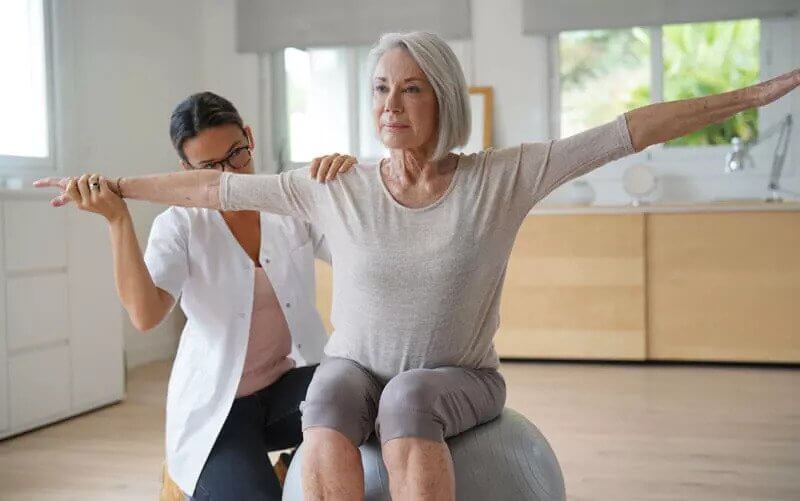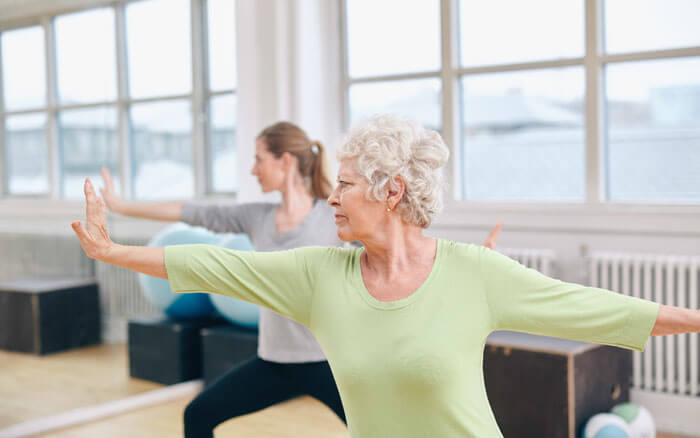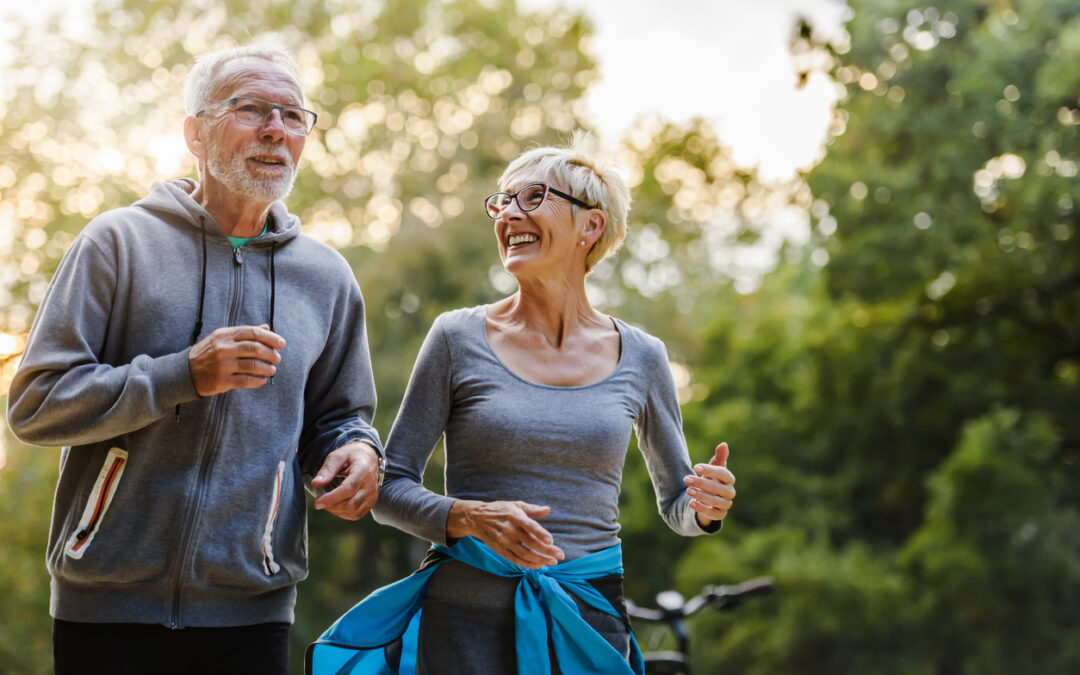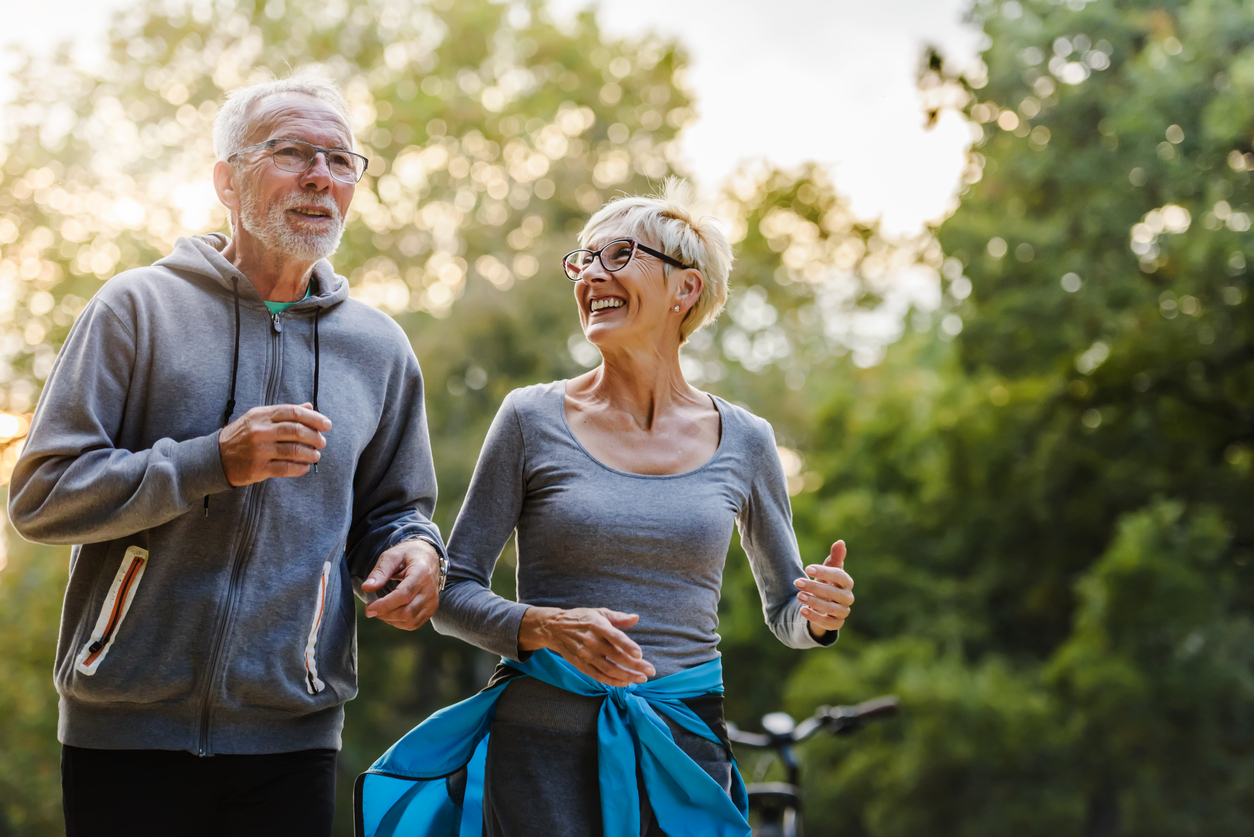
by mobilityplus | 25th Nov, 2020 | Exercise

A strong core is a great measure for good health. From supporting your balance to reducing pain, the benefits are far-reaching. Every movement you make is generated from your core, making it an extremely important part of your body to keep strong. The core muscles don’t just include your abdominals, but also your back muscles, muscles along your spine, pelvis and even hips. If these become weakened, then other muscles need to work even harder to overcompensate, which often results in injury and soreness.
Including core exercises to your workout or daily movement is essential for the elderly. Having a strong core has many benefits too. From reducing injury risk due to poor balance to increasing your mobility, here are a few added bonuses to strengthening your core;
Making your day-to-day easier – Without core strength, even simple tasks like getting up out of your chair become difficult. Working out your core muscles provides you with a better reaction time and allows you to feel more confident with daily tasks.
It’s all about balance – One of the main roles of the core is to support the spine. This is key for aiding in stability, especially when walking. With good balance, you are more likely to prevent injury from trips and falls.
Improve whole-body strength and reduce pain – Research has found that strengthening the core can also impact the body strength of seniors by up to 30%. This also resulted in reduced pain in chronic conditions.
Request a Free Brochure
Simply fill out a quick form and see how we can transform the way you bathe.
Request Free Brochure
So how do you achieve and most importantly maintain a strong core? Read on for these great core exercises for elderly persons.
- Squats – The PT’s favourite and for good reason. The humble squat is great for the whole body but really engages the core.
How to: Start by standing with your feet about hip-width apart and your back straight. Bending at your knees, as if you are about to sit on a chair, keep your chest up and face forward. If you need extra support use a chair in front of you to hold onto, arms outstretched. Continue to bend your knees until your calves and thighs create a 90-degree angle. All the time engage your core muscles by squeezing in your navel to your spine. This may take a little practice! Try 3 sets of 5 to begin with, then build up to 3 sets of 10.
- Leg Lifts. Floor exercises like this one may require some assistance for some older people. If this is the case, stick to seated versions or modify the exercise to perform it in your bed.
How to: Lay on a yoga mat or towel, flat on your back with your legs extended. Keeping your legs straight, lift one heel off the ground, engaging your core, so your back stays flat to the ground. Hold for a moment and lower the leg slowly back to the mat. Repeat on the other side and perform this again for 10 to 15 times.
Once you become stronger you can try lifting both legs at once. It is important to try and keep your back flat on the mat, activating the core each time.
- Seated Side Bends. Performing exercises on a chair allows you to work your muscles with more accessibility.
How to: Sit on a chair with your back straight, your feet planted firmly on the ground, and your knees a few inches apart. Next, hold one hand behind your head and extend the opposite arm straight out to the side. Lean to the side as though you are reaching for something with the outstretched hand. You don’t have to lean too far over; however, you should contract your abdominal muscles as you rise back to an upright position.
Repeat this exercise in one direction 10 to 15 times. Then, switch arms and do another set of 10, or 15 while bending in the opposite direction. Repeat 3 sets on each side.
- Abdominal Bracing. This exercise sounds too simple to be effective yet making it a habit can have a great impact on both your core and posture.
How to: This exercise works on the transverse abdominis muscle – imagine it wrapping around your core like a corset. Begin by standing tall and draw in your belly button to your spine while lightly tightening your abs. Hold this contraction for as long as you feel comfortable, remembering to breathe normally and practice it throughout the day. Making it a habit will mean you can do this exercise throughout the day without even thinking about it, increasing its effectiveness.
- The Bridge. This one is important for strengthening the lower back, glutes and hips as well as the abdominals, crucial for keeping your spine and discs in proper alignment.
How to: Begin by lying on your back on a mat or towel. Bend your legs at a 90-degree angle to the floor, feet flat on the floor for your starting position. Next, activate your glutes and core and push your hips toward the sky, creating a bridge. Hold for a moment, then slowly lower your hips with control until you’re almost touching the floor. Repeat for 5 to 10 reps, making sure to breathe normally.
- The Modified Plank. Planks are one of the best exercises to target your core, as well as your upper body and arms. It is, however, quite a strong exercise, therefore variations are needed such as using your forearms as you build up your strength. If your knees are sensitive, you can use a towel or rolled-up mat under them.
How to do it: Begin on a mat or towel facing the floor on your hands and knees. Now walk out your hands a few inches in front of you as if you are about to perform a push up, and lower onto your elbows and forearms. Contract your core to support you and focus on drawing in your belly button toward your spine. Hold for as long as you can! 30 seconds up to a minute should be the target.

by mobilityplus | 30th Apr, 2019 | Exercise
The Rise of Yoga
There are many reasons why yoga is becoming more and more popular. Your body is like a barometer, it can quickly make you realise some fundamental facts about yourself. If you know how to watch it and what to look for, you can start to become more aware of your health.
For thousands of years, yoga has been a stable way of keeping our bodies and minds healthy and able. With new studios popping up on every corner and thousands of YouTube classes available, accessibility to yoga is greater than ever. Finding the right type of yoga for you is important, take your time trying out the different options and stick with those you enjoy the most.

The benefit of Yoga for over 50s
Balance and stability
Many yoga poses focus on balance and stability, both incredibly important as you age. Strengthening your muscles and improving your balance prevents the likelihood of falls, which can be a common concern for the elderly. This study found that just after a few weeks, participants felt more confident in their balance thanks to yoga.
Not only does it prevent them in the first place, but an increase in strength and stability also helps seniors bounce back and recover, should a fall occur.
Improves respiration
With age comes respiratory limitations and reduced tolerance to physical exertion. Anything that reduces oxygen in the respiratory system can have negative effects on the mind and body. Recent studies have shown that a 12-week yoga program significantly improved respiratory function in elderly women.
Breathing is the foundation of life. Humans can go for some time without food, but you can’t go more than a few minutes without breath, so it’s a good idea to keep your respiratory system in tip-top shape at any age.
Reduces blood pressure
More than one in four adults in the UK have high blood pressure, and it’s becoming a growing concern for the UK population. High blood pressure can lead to cardiovascular disease. Recent studies have found that yoga reduces oxidative stress in the elderly. Oxidative stress is one of the underlying causes of high blood pressure and especially for the elderly, is a strong risk factor for heart attacks.
How to integrate it into your lifestyle
We all wish we had more than 24 hours in a day, and the truth is that we make time for what we actually want to do. Yoga can make an impactful change to your life, by just trying out a few simple moves every day. Have a look at your favourite and most spacious part of your home and keep your yoga mat nearby.
Routine is key. Try to commit to the same time every day, as fitting it into your daily routine will ensure it feels less like a chore and more a part of your daily life. Additionally, start with the basics, as your body may (or may not) be used to being in unfamiliar positions and poses. Keep focusing on your posture and frame, to help support your core. A yoga session need not be a full hour of intense poses, start with shorter 10-15-minute sessions and slowly increase the duration.
We hope we’ve provided you with a few key reasons why you should implement yoga into your lifestyle. Yoga has been around for centuries and is embraced by many cultures to not only connect to self but to keep their bodies fit and able. If you’d like even further information on how yoga can keep you healthy and active, have a read of our article here.

by mobilityplus | 5th Mar, 2018 | Exercise
Only one in four people over the age of 65 exercises regularly. This group tends to be one of the least active age groups around. This makes sense, as we have less energy as we get older and mobility becomes more of a problem.
This is especially true after retirement. Without work, there is less of a reason to be active in certain areas – e.g. walking to work.
However, an active lifestyle becomes even more crucial as we get older. But why do you need to stay active? What are the benefits of exercising as we get older? Let’s find out.

Improves your mood
Exercise is well known to release endorphins, a chemical in the brain that can boost your mood. The exact mechanics behind how exercise can help beat depression and anxiety aren’t fully understood, but working out can definitely ease the symptoms.
Whilst exercising, you’re producing endorphins to help improve your sense of wellbeing, but also taking your own mind off your worries to help escape a cycle of negative thoughts that can often feed depression and anxiety.
Widens your social circle
Exercise can be a very social event that helps you get out and about as you get older. By booking classes that are more likely to be attended by other seniors, you gain a chance to widen your social circle and meet people outside your usual group of friends.
Classes such as water aerobics and tai chi give you the perfect opportunity to be surrounded by like minded people. If you’re suffering with feelings of loneliness or isolation, the companionship whilst exercising can be just as important as the exercise itself.
Helps improve strength and mobility
As we get older, the body naturally weakens. Muscles no longer work to the best of their ability, and balance starts to decline. All of these factors combined mean that older people start to lose their independence.
By exercising, you work on these factors. You can strengthen your muscles and improve your flexibility, helping to regain some independence. In some cases, set workouts can even help lessen the symptoms of long-term conditions, such as arthritis.
Can prevent falls
By working on your strength and mobility, you’re actively working to improve your muscle strength and bone density – both of which can help you to balance better in the future.
By improving your balance, you’re able to reduce the risk of falls. This study estimates that regular exercise can reduce the risk of having a hip fracture by as much as 40%.
Increases mental capacity
As well as improving your muscle strength, you actually improve the most important muscle of all when you work out – the brain. By working out, you’re actively focusing on what you’re doing and, in doing so, keeping your brain active.
This means that all your diverse brain functions, such as multitasking and creativity, are being used. This helps prevent things like memory loss, cognitive decline and dementia. Being active can even help slow the progression of brain disorders such as Alzheimer’s.
Helps you heal
The healing process for our bodies takes longer as we age, but exercise has proven to help improve the entire process. Exercising can actually improve the time it takes for wounds to heal by up to 25%.
This is because exercising stimulates immune activity in the body, specifically producing anti-inflammatory effects that repair muscle tissue.
By exercising – or continuing to exercise – as you get older, you really improve your quality of life long into your golden years. By reducing your risk of falls, and improving your mental health, you help to lead a long, happy life that is full of independence.





